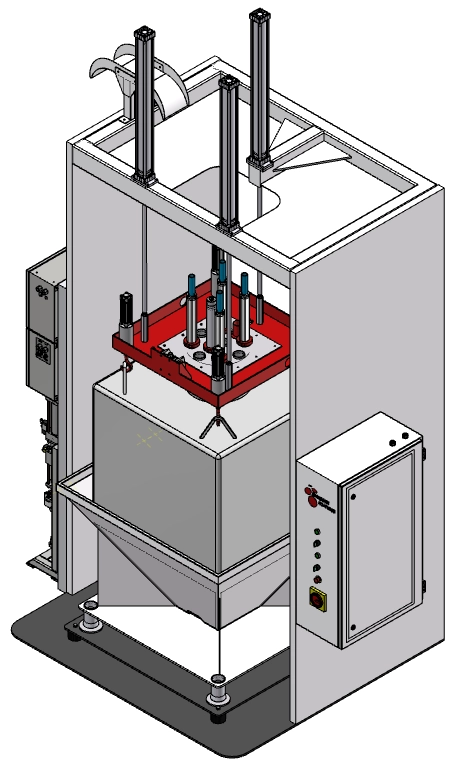Content Menu
● Understanding Powder Sieve Screening
>> What is Powder Sieve Screening?
>> Importance of Sieve Screening in Powder Coating
● Types of Sieve Screening Methods
>> 1. Mechanical Sieving
>>> Advantages of Mechanical Sieving
>>> Disadvantages of Mechanical Sieving
>> 2. Ultrasonic Sieving
>>> How Ultrasonic Sieving Works
>>> Advantages of Ultrasonic Sieving
>>> Disadvantages of Ultrasonic Sieving
>> 3. Air Classification
>>> Advantages of Air Classification
>>> Disadvantages of Air Classification
● Factors Influencing Sieve Selection
>> 1. Particle Size Distribution
>> 2. Contamination Control
>> 3. Production Volume
>> 4. Budget Constraints
● Best Practices for Powder Sieve Screening
>> 1. Regular Maintenance
>> 2. Calibration
>> 3. Training Operators
>> 4. Monitoring Particle Size Distribution
● Conclusion
● Frequently Asked Questions
>> 1. What is the primary purpose of powder sieve screening?
>> 2. How does ultrasonic sieving improve powder screening?
>> 3. What factors should be considered when choosing a sieve method?
>> 4. How often should sieve equipment be maintained?
>> 5. Can mechanical sieves be used for fine powders?
In the world of powder coating, achieving the perfect finish is paramount. One of the critical processes that contribute to this is powder sieve screening. This article delves into the various methods of powder sieve screening, their importance, and how they can enhance the quality of powder coatings.

Understanding Powder Sieve Screening
What is Powder Sieve Screening?
Powder sieve screening is a process used to separate particles of different sizes in powdered materials. This technique is essential in the powder coating industry, where the quality of the coating is directly influenced by the particle size distribution of the powder used. By ensuring that only particles of the desired size are used, manufacturers can achieve a smoother finish and better adhesion.
Importance of Sieve Screening in Powder Coating
The primary purpose of sieve screening in powder coating is to remove contaminants and ensure uniform particle size. Contaminants can include larger particles, dust, or foreign materials that can affect the coating's performance. A consistent particle size distribution is crucial for achieving a uniform coating thickness, which in turn affects the durability and appearance of the final product.
Types of Sieve Screening Methods
There are several methods of sieve screening used in the powder coating industry, each with its advantages and applications.
1. Mechanical Sieving
Mechanical sieving is one of the most traditional methods of powder screening. It involves the use of a vibrating or rotating sieve that separates particles based on size. The powder is placed on the sieve, and as it vibrates or rotates, smaller particles pass through the mesh while larger particles remain on top.
Advantages of Mechanical Sieving
- Cost-Effective: Mechanical sieves are generally less expensive than other types of screening equipment.
- Simplicity: The operation of mechanical sieves is straightforward, making them easy to use and maintain.
Disadvantages of Mechanical Sieving
- Limited Precision: Mechanical sieving may not be as precise as other methods, especially for very fine powders.
- Potential for Contamination: If not properly cleaned, mechanical sieves can introduce contaminants into the powder.
2. Ultrasonic Sieving
Ultrasonic sieving utilizes high-frequency sound waves to enhance the screening process. This method is particularly effective for fine powders that tend to clump together, which can obstruct the sieve mesh.
How Ultrasonic Sieving Works
Ultrasonic vibrations are applied to the sieve mesh, preventing particles from sticking together and ensuring that they pass through the mesh more efficiently. This method can significantly increase throughput and improve the quality of the screened powder.
Advantages of Ultrasonic Sieving
- Higher Efficiency: Ultrasonic sieving can process larger quantities of powder in a shorter time.
- Improved Quality: This method reduces the risk of contamination and ensures a more uniform particle size distribution.
Disadvantages of Ultrasonic Sieving
- Higher Cost: Ultrasonic sieves are typically more expensive than mechanical sieves.
- Complexity: The technology involved can make maintenance and operation more complex.
3. Air Classification
Air classification is a method that uses air flow to separate particles based on size and density. In this process, the powder is introduced into a chamber where air is blown through it. Lighter particles are carried away by the air, while heavier particles fall to the bottom.
Advantages of Air Classification
- Precision: This method can achieve very precise separations based on particle size and density.
- No Mechanical Parts: Air classification systems have fewer moving parts, which can reduce maintenance needs.
Disadvantages of Air Classification
- Higher Energy Consumption: This method can be more energy-intensive compared to mechanical or ultrasonic sieving.
- Initial Setup Cost: The equipment required for air classification can be expensive to install.
Factors Influencing Sieve Selection
When selecting a sieve screening method, several factors should be considered:
1. Particle Size Distribution
The desired particle size distribution of the powder will significantly influence the choice of sieve. For fine powders, ultrasonic or air classification methods may be more suitable, while mechanical sieving may suffice for coarser materials.
2. Contamination Control
The level of contamination that needs to be controlled will also affect the choice of screening method. Ultrasonic sieving is often preferred for applications where contamination is a critical concern.
3. Production Volume
For high-volume production, methods that offer higher throughput, such as ultrasonic or air classification, may be necessary to meet demand.
4. Budget Constraints
Cost considerations will always play a role in the decision-making process. Mechanical sieves are more budget-friendly, while ultrasonic and air classification systems require a larger investment.
Best Practices for Powder Sieve Screening
To ensure optimal results from powder sieve screening, consider the following best practices:
1. Regular Maintenance
Regular cleaning and maintenance of sieves are essential to prevent contamination and ensure consistent performance. This includes checking for wear and tear and replacing any damaged components.
2. Calibration
Calibrating the sieve equipment regularly helps maintain accuracy in particle size separation. This is particularly important in industries where precision is critical.
3. Training Operators
Proper training for operators on the use of sieve screening equipment can significantly enhance the efficiency and effectiveness of the screening process.
4. Monitoring Particle Size Distribution
Implementing a system for monitoring particle size distribution can help identify issues early and allow for adjustments to be made to the screening process as needed.
Conclusion
Powder sieve screening is a vital process in the powder coating industry, directly impacting the quality and performance of the final product. By understanding the different methods available and their respective advantages and disadvantages, coating professionals can make informed decisions that enhance their production processes. Whether opting for mechanical, ultrasonic, or air classification methods, the key is to ensure that the chosen method aligns with the specific needs of the application.

Frequently Asked Questions
1. What is the primary purpose of powder sieve screening?
The primary purpose of powder sieve screening is to separate particles of different sizes and remove contaminants, ensuring a uniform particle size distribution for better coating quality.
2. How does ultrasonic sieving improve powder screening?
Ultrasonic sieving uses high-frequency vibrations to prevent particles from clumping together, allowing for more efficient screening of fine powders and reducing contamination.
3. What factors should be considered when choosing a sieve method?
Factors to consider include the desired particle size distribution, contamination control needs, production volume, and budget constraints.
4. How often should sieve equipment be maintained?
Sieve equipment should be regularly maintained and cleaned to prevent contamination and ensure consistent performance, with calibration checks performed as needed.
5. Can mechanical sieves be used for fine powders?
While mechanical sieves can be used for fine powders, they may not be as effective as ultrasonic or air classification methods, which are better suited for achieving precise separations.
Hot Tags: China, Global, OEM, private label, manufacturers, factory, suppliers, manufacturing company










































 .
. 